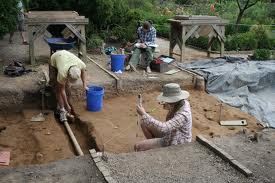Christian Apologetics ,
The Bible
Which Bible Translation is the 'Right' Translation?
There are Actually Several Methods to Translate the Bible…
 Some are intended to provide strict translation and interpretation from the original (the source) language, and others are intended to relay meaning from the original into today's (the receptor) language. To assure the most independent and unbiased translations and interpretations, in all reputable cases, a board of scholars is employed, along with specialists in history, grammar, etc. Why interpretation along with translation? Because the Hebrew and Greek languages are grammatically quite different from most all others.
Some are intended to provide strict translation and interpretation from the original (the source) language, and others are intended to relay meaning from the original into today's (the receptor) language. To assure the most independent and unbiased translations and interpretations, in all reputable cases, a board of scholars is employed, along with specialists in history, grammar, etc. Why interpretation along with translation? Because the Hebrew and Greek languages are grammatically quite different from most all others.
Just simply translating word to word would be difficult, and in some cases impossible, if the purpose is to relay coherent meaning. For example, according to specialist Raymond Elliot:
The word 'of' is very common in English, and it is used to represent a wide variety of relationships between words. In only the first chapter of the Gospel of Mark, nine different English translations use the word 'of' between eighteen and thirty one times. The word represents such relationships as possession, kinship, location, names of geographical places and features, the material from which something is made, political jurisdictions, the doer of an action, and so on. But there is no word 'of' in Greek at all! Greek has other ways of expressing those relationships that are translated by 'of' in English…The problem for the translator is to find, in the receptor language, those forms that will appropriately represent the structures of the source language – first as to meaning, style, and naturalness, then as much as possible as to form."
Raymond Elliot; "Bible Translation"; in The Origin Of The Bible; Philip Wesley Comfort editor
In order to translate and interpret for the masses today, specialists utilize (generically) two forms of strategy:
Formal Equivalence attempts to preserve the original language structure and vocabulary (the form). While strictly preserving what was originally written, it may cause difficulty in understanding items such as a historically unique statement that has no close English parallel. An example of a translation with Formal Equivalence intent is the New American Standard Bible. This type of translation leaves it up to us to figure out what the original meaning is.
Dynamic Equivalence attempts to relate the structure to commonly understood terms in the 'receptor' language (the meaning). For example, when Paul (Romans 7:18) speaks of the 'sinful flesh' (NAS) we know that he is speaking of the 'sin nature' (NIV). Tries to interpret the meaning for us, accurately and fairly.
Examples of Translation and Interpretation
|
Reference
|
Literal Greek Translation
|
King James Version
|
New American Standard Bible
|
New International Version
|
|
Matthew 1:1
|
Book ancestry Jesus equals Christ son David son Abraham.
|
The book of the generation of Jesus Christ, the son of David, the son of Abraham.
|
The record of the genealogy of Jesus the Messiah, the son of David, the son of Abraham.
|
A record of the genealogy of Jesus Christ, the son of David, the son of Abraham.
|
|
John 1:13
|
who — not of blood nor of a will of flesh, nor of a will of man but — of God were begotten
|
Which were born, not of blood, nor of the will of the flesh, not of the will of man, but of God.
|
who were born, not of blood nor of the will of the flesh nor of the will of man, but of God.
|
children born not of natural descent, not of human decision or a husband's will, but born of God.
|
Isn't The King James The Only 'Real' Bible?
There is somewhat of a controversy regarding the King James Bible. Because this version is the 'oldest' English version, it is what many of us grew up with. We are comfortable with it, despite the fact that it was written over 500 years ago, in a style of English that is no longer in use. It is beautiful and poetic, and gives the Word of God a sense of style and class, as one would expect. BUT, it is certainly not the only English interpretation that is accurate and reliable. As has been said 'if the King James Version was good enough for Paul, then it's good enough for me' exposes the silliness of this debate.
Are There Any 'Unreliable' Translations?
Generally, there is minimal scholarly 'issue' with the English translations that we have today. This is easily provable, first, since there is essentially no 'active' debate regarding the translations, and second, because the quantity and availability of scholars (Christian and non-Christian) to assure us is copious. To confirm this in your mind, especially if you still have doubts, take any English translation to your local university Greek or Hebrew scholar, and have them confirm the translation's near perfect validity.
Currently, the only 'active' debate is more political than scholarly, regarding the 'gender-inclusion' translations of the TNIV, or 'Today's New International Version.' In places where the original languages refers to (essentially) mankind as 'he' or 'him', this version has changed the terms to 'they' etc. While troublesome to some traditionalists, this debate seems to miss the mark in practicality, since most parents of daughters explain to them that (in general) the blessings or curses attributed to 'man' means 'mankind', to assure their girls that they are not left out.
The bottom line is, that our English translations of the Bible are assuredly trustworthy, and reliable.
Recommendations
Because of the reliable condition of the English translations, a version should be picked (generally) based upon your purpose and your preference. For beauty and elegance, the King James Version is classic. For readability and study purposes, choose the New International Version. For serious contemplation and consideration, many prefer the New American Standard Bible.

 You may have heard a defender of Materialism suggest the notion that random results plus enough time could easily produce order.
You may have heard a defender of Materialism suggest the notion that random results plus enough time could easily produce order. 

 Online Bible Resources:
Online Bible Resources: One particularly favorite game of a skeptic is to find alleged discrepancies within the Bible, under the assumption that the existence of these discrepancies invalidate the claim of Divine inspiration – after all, if the Bible were truly inspired, then it would be perfect and have no contradictions or discrepancies – right? In addition to this game, the issue can be of serious importance to a seeker who sees the difficulties, perceives intellectual issues and needs resolution in order to continue serious contemplation of Christianity. It can be a significant stumbling block when not properly understood.
One particularly favorite game of a skeptic is to find alleged discrepancies within the Bible, under the assumption that the existence of these discrepancies invalidate the claim of Divine inspiration – after all, if the Bible were truly inspired, then it would be perfect and have no contradictions or discrepancies – right? In addition to this game, the issue can be of serious importance to a seeker who sees the difficulties, perceives intellectual issues and needs resolution in order to continue serious contemplation of Christianity. It can be a significant stumbling block when not properly understood.  Some are intended to provide strict translation and interpretation from the original (the source) language, and others are intended to relay meaning from the original into today's (the receptor) language. To assure the most independent and unbiased translations and interpretations, in all reputable cases, a board of scholars is employed, along with specialists in history, grammar, etc. Why interpretation along with translation? Because the Hebrew and Greek languages are grammatically quite different from most all others.
Some are intended to provide strict translation and interpretation from the original (the source) language, and others are intended to relay meaning from the original into today's (the receptor) language. To assure the most independent and unbiased translations and interpretations, in all reputable cases, a board of scholars is employed, along with specialists in history, grammar, etc. Why interpretation along with translation? Because the Hebrew and Greek languages are grammatically quite different from most all others.  As with the independent collaborations, archaeological evidences discovered confirming items and events in the Bible serve to provide reason to consider the Bible and its teachings seriously. It has been remarked that NO archaeological evidence has been discovered that disproves anything mentioned in the Bible!
As with the independent collaborations, archaeological evidences discovered confirming items and events in the Bible serve to provide reason to consider the Bible and its teachings seriously. It has been remarked that NO archaeological evidence has been discovered that disproves anything mentioned in the Bible!